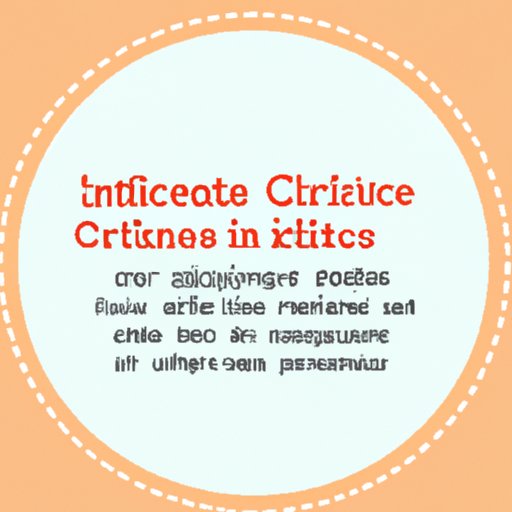
I. Introduction
Citing quotes is an essential skill for writers across all disciplines. By acknowledging the sources of information and ideas used in your work, you demonstrate credibility and uphold academic integrity. This article is a comprehensive guide to help writers understand how to cite quotes properly and seamlessly.
II. How to Cite Quotes in Different Writing Styles
There are several writing styles that writers can follow to cite quotes effectively. Here are the guidelines for the most commonly used citation styles:
APA Style
The American Psychological Association (APA) style is commonly used in social sciences. Here are the guidelines for citing quotes in APA style:
- In-Text Citations: The quote must be accompanied by the author’s last name and the year of publication, both enclosed in parentheses (Author, Year).
- References Page: The complete reference of the source must be listed in the references page in alphabetical order of the author’s last name.
MLA Style
Modern Language Association (MLA) style is commonly used in humanities. Here are the guidelines for citing quotes in MLA style:
- In-Text Citations: The quote must be accompanied by the author’s last name and the page number in parentheses (Author Page).
- Works Cited Page: The complete reference of the source must be listed in the works cited page in alphabetical order of the author’s last name.
Chicago Style
Chicago style is commonly used in history and other humanities subjects. Here are the guidelines for citing quotes in Chicago style:
- Footnotes and Endnotes: Quotes should be placed within footnotes or endnotes, with the full reference included in a bibliography page at the end of the document.

III. Importance of Citing Sources and Avoiding Plagiarism
Citing quotes properly demonstrates academic integrity and avoids plagiarism, which carries significant risks such as academic punishment and legal consequences. Plagiarism is the act of using someone else’s work or ideas without proper citation or attribution. To avoid this, writers should use quotes properly, and also include citations for paraphrased content.
IV. Examples of How to Seamlessly Integrate Quotes into Your Writing
Integrating quotes into writing can be challenging, but it doesn’t have to be. Here are some techniques for seamlessly integrating quotes into your writing:
- Using Signal Phrases: Signal phrases introduce a quote and the author or publication it comes from. For example, “According to Smith (2021), [quote].”
- Using Ellipses and Brackets: Ellipses and brackets allow writers to selectively quote while changing minor details but maintain the context of the quote. For example, “[quote] when the new CEO took over from the previous leadership [emphasis added].”
- Formatting Long Quotes: Long quotes should be formatted as block quotes, set apart from the main text and usually indented, to improve readability.
- Changing Tenses and Pronouns: Changing tenses and pronouns can help to make quotes better fit the writer’s context and blend more seamlessly with the rest of the writing.
V. Comparison of Different Citation Management Tools
Citation management tools help writers manage quotes and references. Some popular citation management tools include Zotero, Mendeley, EndNote, and RefWorks. Citation tools help writers format citations properly and allow for easy updating and exporting of bibliographies. However, each tool has its benefits and drawbacks worth considering based on personal preferences and needs.
VI. Ways to Effectively Paraphrase Quotes Instead of Directly Quoting Them
Paraphrasing is the process of restating a quote into your own words while keeping the original meaning intact. Paraphrasing allows for a smoother integration of quotes into writing, and the avoidance of quotes that are too long or difficult to integrate. Techniques for paraphrasing include using synonyms, changing the sentence structure, and restructuring information in a new way.
VII. The Role of In-Text Citations and How to Format Them Properly
In-text citations help differentiate quotes from original content and provide readers with the means to locate the original source. It is essential to format in-text citations properly in the style guide used to ensure consistency.
VIII. Common Mistakes to Avoid When Citing Quotes and How to Fix Them
Common mistakes to avoid when citing quotes include incorrect formatting, missed citations, and referencing incorrect sources. Mistakes can be fixed by double-checking formatting guidelines and working cautiously to ensure all sources are properly accounted for.
IX. Conclusion
Citing quotes is an essential skill that contributes to academic integrity and the avoidance of plagiarism. By integrating quotes seamlessly, formatting in-text citations properly, using citation management tools effectively, and avoiding common mistakes, writers can confidently create well-researched and well-cited written works.
This comprehensive guide has provided guidelines and tips for citing quotes and how to avoid plagiarism. By following these tips and guidelines, writers can demonstrate their credibility and uphold academic integrity.





